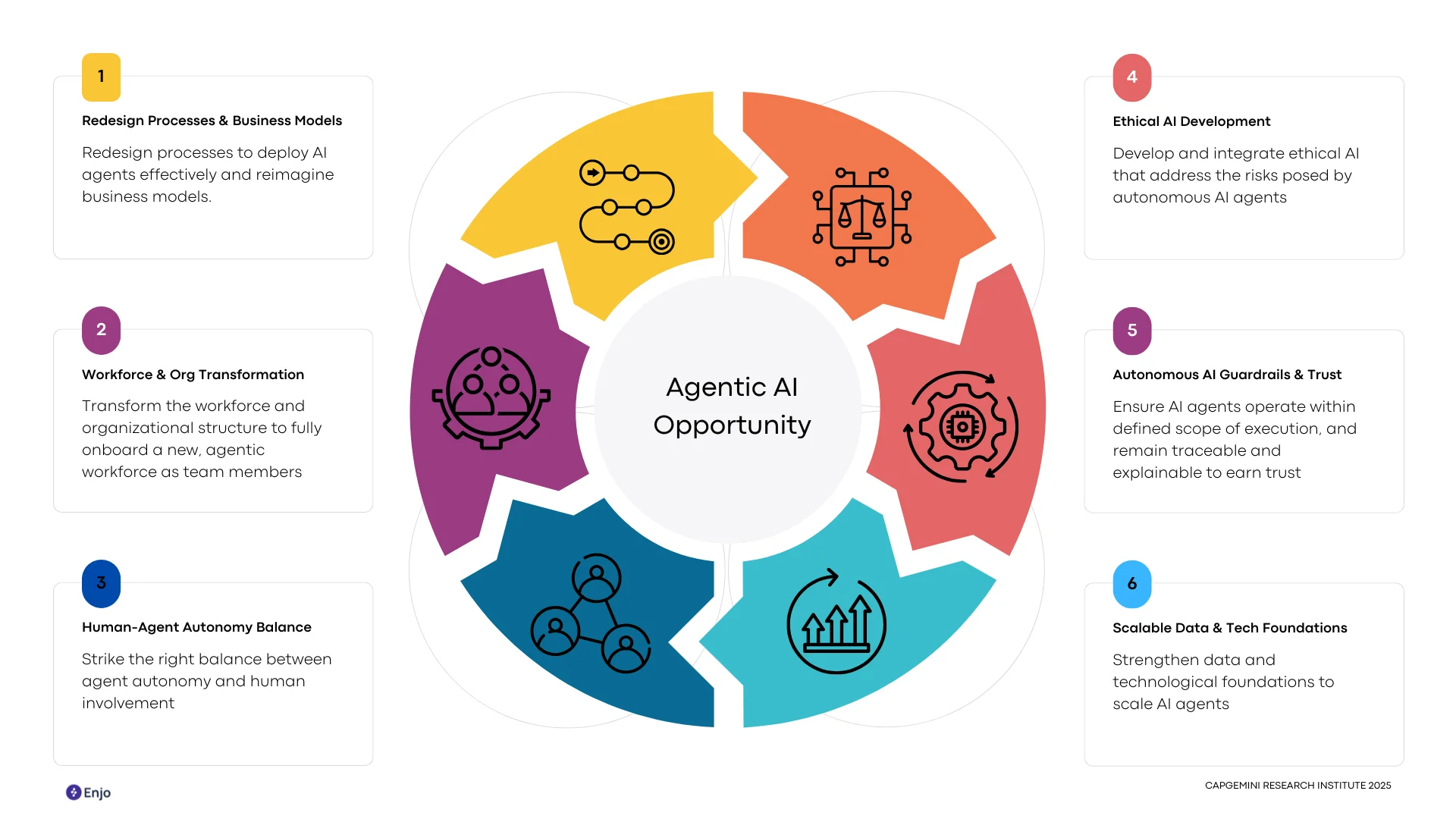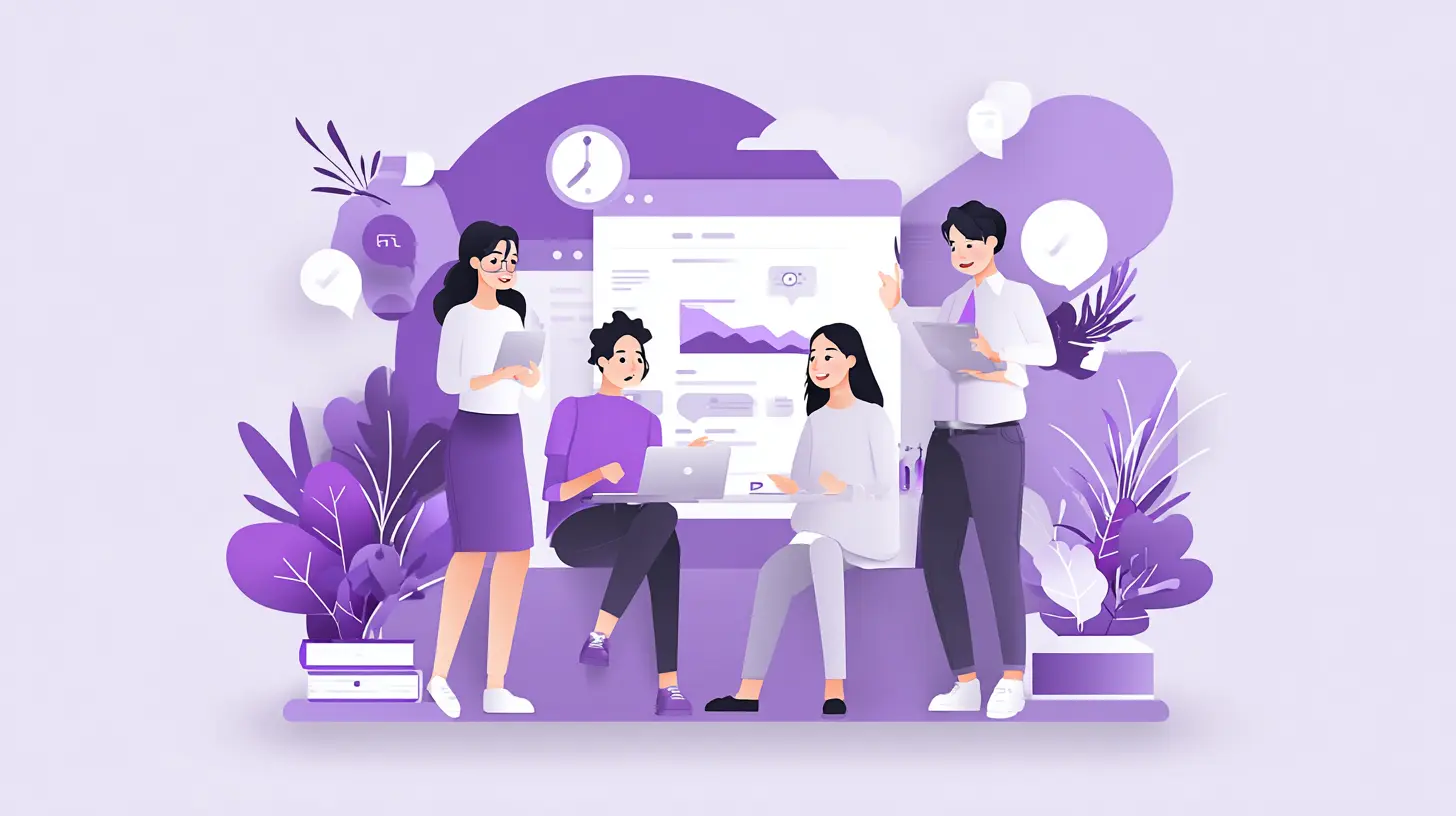What Makes Great Customer Service in 2025
We are not that far from 2026, and customer service is no longer just about fixing problems. It has become the key to keeping customers and driving business growth. Acquisition costs are rising. Competition is fiercer than ever. Retaining existing customers now saves money and builds a stronger foundation for success. Research from Bain & Company shows that a 5% increase in retention can lift profits by up to 95%. For leaders in IT, HR, Sales, and Customer Service, this means a big shift. Customer service must move from reacting to issues to proactively securing loyalty.
Picture this scenario. A customer is frustrated and close to leaving. Your team spots the warning signs early. Instead of waiting for a complaint, they reach out with a personalized fix. The customer stays, and their trust in your brand grows. This is not just good service. It is a deliberate strategy that protects your bottom line. In today’s world, retention is the priority that senior leaders cannot ignore.

Key Trends Defining Customer Service in 2026
As customer service evolves into a retention-first strategy, three trends stand out in 2025 which can lead us to 2026 and beyond. These trends reshape how businesses deliver value, solve problems, and build loyalty. For senior leaders, understanding and acting on these shifts is essential to staying competitive.
Outcome-Based Models
Outcome-based models tie customer success directly to measurable results. Instead of charging for features or time, businesses align pricing with the actual value delivered. For example, a software company might charge based on the productivity gains a client achieves, such as a 15% increase in team efficiency. This creates a partnership where both sides focus on results, not just transactions.
Why does this matter? It builds trust. Customers see your business as invested in their success, not just your own. For leaders, this means rethinking pricing and service agreements to focus on shared goals. Start by identifying key outcomes your customers care about, then design offerings that deliver and measure those results.
Gig Economy Support
The gig economy is transforming customer service by providing on-demand expertise. Freelance specialists can jump in to solve niche problems quickly, offering a level of agility traditional teams can’t match. For instance, a customer with a rare software bug might connect with a freelance developer who fixes it in minutes, not hours.
This model speeds up resolutions and scales easily. To leverage it, leaders should explore platforms that connect gig workers to support teams. Focus on quality control and training to ensure consistency. The payoff is faster, more specialized service that keeps customers satisfied and loyal.
Proactive AI-Powered Service
AI is no longer just reactive. Even in 2025, it’s proactive, spotting and fixing issues before customers even notice. For example, a telecom company might use AI to detect a service outage and notify affected customers with an estimated fix time, all before the first complaint.
This reduces support volume and builds trust. Customers feel cared for, not ignored. To implement this, invest in AI tools that analyze patterns in customer data and trigger automated responses. Pair this with human oversight to handle exceptions. The result is a service model that’s efficient, empathetic, and retention-focused.
Learn more about Implementation of Support Automation

How to Implement a Retention-First Strategy
Turning the trends of 2025 into actionable strategies for 2026 requires a clear, focused approach. Below are three key steps that senior leaders in IT, HR, Sales, and Customer Service can take to build a retention-first customer service model. Each step is directly linked to the trends of outcome-based models, gig economy support, and proactive AI-powered service, ensuring your organization stays ahead in a competitive landscape.
1. Align with Outcome-Based Models
To succeed with outcome-based models, start by understanding what truly matters to your customers. Conduct interviews or surveys to identify their key pain points and desired outcomes. Once you have this insight, redesign your pricing and service agreements to focus on delivering measurable results. For example, instead of charging for software features, tie pricing to specific customer achievements, such as a 15% increase in operational efficiency. This shift not only builds trust but also positions your business as a partner invested in your customers’ success.
2. Leverage Gig Economy Support
Integrating gig economy support into your service model requires a strategic approach. Begin by exploring platforms that connect freelance experts to your support teams. Whether you partner with existing gig platforms or create an internal system, prioritize quality control and training to ensure consistency. Freelance specialists can resolve niche issues faster than traditional teams, but clear guidelines and oversight are essential to maintain service standards. This flexibility allows you to scale support efficiently while keeping customers satisfied.
3. Invest in Proactive AI-Powered Service
Proactive service powered by AI is a game-changer for retention. Start by investing in AI tools that analyze customer data to detect patterns and trigger automated responses. For instance, machine learning algorithms can identify potential service outages or product issues before they affect customers. Integrate these tools into your existing support systems, but ensure human oversight is in place to handle exceptions and refine AI performance. This balance of automation and empathy reduces support volume while showing customers you care about their experience.
Read our guide on Customer Service Automation
Best-Practice Playbook: Turning Pillars Into Performance
1. Assess Readiness
- Run Enjo’s Helpdesk Assessment on 12 months of tickets to uncover repetitive intents and deflection potential. Understanding business needs and goals so that Enjo understand the required solutions.
- Benchmark current FRT, FCR, CES against industry baselines and building knowledge bases.
2. Automate the Frequent, With Guardrails
- Identify top 25 intents (≥20% volume).
- Build an AI Agent in Enjo Agent Studio with:
- AI Answers knowledge packs.
- AI Ticketing mapping for flows.
- Action plugins for downstream apps and task automation.
- Pilot on a low-risk channel (Slack, Teams or any other) and iterate every 2 weeks on conversation analytics.
3. Augment Human Agents
- Deploy Agent Assist inside the existing ticketing tools like Jira, ServiceNow and so on; agents get real-time suggested replies, knowledge snippets, and sentiment cues, trimming handle time by 25%.
- Understand and solve what could have been solved and to put agents’ time and effort into better tasks and opportunities.
Get to know more about the Integrations offered by Enjo.
4. Optimize Continuously
- Use Insights to spotlight high-effort flows, retrain models monthly, and retire obsolete macros. The sentiment analysis and quality of audits getting better to get much more actionable insights.
- Correlate CES dips with product logs and ship fixes within one sprint.
Future Outlook (2026-2030)
- Fully autonomous service hubs where AI handles 90% of tier-1 and triggers IoT actions (device resets, entitlement checks) without human touch.
- Emotional-AI routing matching agents by sentiment and personality fit, raising NPS by double digits.
- AI-native CX metrics replacing surveys with real-time intent & sentiment scoring, already expected by 80% of support leaders.
- Sustainability dashboards linking digital deflection to carbon savings, part of ESG reporting.
- Voice AI ubiquity — 74% of consumers expect voice-aware AI across touchpoints.
Learn how to choose the best AI Chatbot for Customer Support Automation.
The Path Forward
In 2026, customer service is no longer a reactive function but a strategic driver of retention and growth. By embracing outcome-based models, gig economy support, and proactive AI-powered service, businesses can transform support into a loyalty-building powerhouse. The data is clear. A 5% increase in retention can boost profits by up to 95% (Bain & Company). Senior leaders in IT, HR, Sales, and Customer Service who act on these trends will not only meet rising customer expectations but also gain a competitive edge in a crowded market.
The time to act is now. Start by assessing your current service model. Identify where outcome-based pricing can align with customer goals, explore gig economy platforms to enhance support agility, and invest in AI tools like Enjo’s platform to enable proactive care. Enjo, trusted by companies like Netflix and Spotify, offers secure, scalable solutions that blend automation with human empathy, ensuring retention-first success.
Take the first step today. Start a free trial of Enjo to see how AI-driven insights can reduce churn and elevate satisfaction. Alternatively, book a demo with the Enjo team to explore tailored strategies for your organization. In 2026, retention-first customer service is your path to sustainable growth.

Key Trends Defining Customer Service in 2026
As customer service evolves into a retention-first strategy, three trends stand out in 2025 which can lead us to 2026 and beyond. These trends reshape how businesses deliver value, solve problems, and build loyalty. For senior leaders, understanding and acting on these shifts is essential to staying competitive.
Outcome-Based Models
Outcome-based models tie customer success directly to measurable results. Instead of charging for features or time, businesses align pricing with the actual value delivered. For example, a software company might charge based on the productivity gains a client achieves, such as a 15% increase in team efficiency. This creates a partnership where both sides focus on results, not just transactions.
Why does this matter? It builds trust. Customers see your business as invested in their success, not just your own. For leaders, this means rethinking pricing and service agreements to focus on shared goals. Start by identifying key outcomes your customers care about, then design offerings that deliver and measure those results.
Gig Economy Support
The gig economy is transforming customer service by providing on-demand expertise. Freelance specialists can jump in to solve niche problems quickly, offering a level of agility traditional teams can’t match. For instance, a customer with a rare software bug might connect with a freelance developer who fixes it in minutes, not hours.
This model speeds up resolutions and scales easily. To leverage it, leaders should explore platforms that connect gig workers to support teams. Focus on quality control and training to ensure consistency. The payoff is faster, more specialized service that keeps customers satisfied and loyal.
Proactive AI-Powered Service
AI is no longer just reactive. Even in 2025, it’s proactive, spotting and fixing issues before customers even notice. For example, a telecom company might use AI to detect a service outage and notify affected customers with an estimated fix time, all before the first complaint.
This reduces support volume and builds trust. Customers feel cared for, not ignored. To implement this, invest in AI tools that analyze patterns in customer data and trigger automated responses. Pair this with human oversight to handle exceptions. The result is a service model that’s efficient, empathetic, and retention-focused.
Learn more about Implementation of Support Automation

How to Implement a Retention-First Strategy
Turning the trends of 2025 into actionable strategies for 2026 requires a clear, focused approach. Below are three key steps that senior leaders in IT, HR, Sales, and Customer Service can take to build a retention-first customer service model. Each step is directly linked to the trends of outcome-based models, gig economy support, and proactive AI-powered service, ensuring your organization stays ahead in a competitive landscape.
1. Align with Outcome-Based Models
To succeed with outcome-based models, start by understanding what truly matters to your customers. Conduct interviews or surveys to identify their key pain points and desired outcomes. Once you have this insight, redesign your pricing and service agreements to focus on delivering measurable results. For example, instead of charging for software features, tie pricing to specific customer achievements, such as a 15% increase in operational efficiency. This shift not only builds trust but also positions your business as a partner invested in your customers’ success.
2. Leverage Gig Economy Support
Integrating gig economy support into your service model requires a strategic approach. Begin by exploring platforms that connect freelance experts to your support teams. Whether you partner with existing gig platforms or create an internal system, prioritize quality control and training to ensure consistency. Freelance specialists can resolve niche issues faster than traditional teams, but clear guidelines and oversight are essential to maintain service standards. This flexibility allows you to scale support efficiently while keeping customers satisfied.
3. Invest in Proactive AI-Powered Service
Proactive service powered by AI is a game-changer for retention. Start by investing in AI tools that analyze customer data to detect patterns and trigger automated responses. For instance, machine learning algorithms can identify potential service outages or product issues before they affect customers. Integrate these tools into your existing support systems, but ensure human oversight is in place to handle exceptions and refine AI performance. This balance of automation and empathy reduces support volume while showing customers you care about their experience.
Read our guide on Customer Service Automation
Best-Practice Playbook: Turning Pillars Into Performance
1. Assess Readiness
- Run Enjo’s Helpdesk Assessment on 12 months of tickets to uncover repetitive intents and deflection potential. Understanding business needs and goals so that Enjo understand the required solutions.
- Benchmark current FRT, FCR, CES against industry baselines and building knowledge bases.
2. Automate the Frequent, With Guardrails
- Identify top 25 intents (≥20% volume).
- Build an AI Agent in Enjo Agent Studio with:
- AI Answers knowledge packs.
- AI Ticketing mapping for flows.
- Action plugins for downstream apps and task automation.
- Pilot on a low-risk channel (Slack, Teams or any other) and iterate every 2 weeks on conversation analytics.
3. Augment Human Agents
- Deploy Agent Assist inside the existing ticketing tools like Jira, ServiceNow and so on; agents get real-time suggested replies, knowledge snippets, and sentiment cues, trimming handle time by 25%.
- Understand and solve what could have been solved and to put agents’ time and effort into better tasks and opportunities.
Get to know more about the Integrations offered by Enjo.
4. Optimize Continuously
- Use Insights to spotlight high-effort flows, retrain models monthly, and retire obsolete macros. The sentiment analysis and quality of audits getting better to get much more actionable insights.
- Correlate CES dips with product logs and ship fixes within one sprint.
Future Outlook (2026-2030)
- Fully autonomous service hubs where AI handles 90% of tier-1 and triggers IoT actions (device resets, entitlement checks) without human touch.
- Emotional-AI routing matching agents by sentiment and personality fit, raising NPS by double digits.
- AI-native CX metrics replacing surveys with real-time intent & sentiment scoring, already expected by 80% of support leaders.
- Sustainability dashboards linking digital deflection to carbon savings, part of ESG reporting.
- Voice AI ubiquity — 74% of consumers expect voice-aware AI across touchpoints.
Learn how to choose the best AI Chatbot for Customer Support Automation.
The Path Forward
In 2026, customer service is no longer a reactive function but a strategic driver of retention and growth. By embracing outcome-based models, gig economy support, and proactive AI-powered service, businesses can transform support into a loyalty-building powerhouse. The data is clear. A 5% increase in retention can boost profits by up to 95% (Bain & Company). Senior leaders in IT, HR, Sales, and Customer Service who act on these trends will not only meet rising customer expectations but also gain a competitive edge in a crowded market.
The time to act is now. Start by assessing your current service model. Identify where outcome-based pricing can align with customer goals, explore gig economy platforms to enhance support agility, and invest in AI tools like Enjo’s platform to enable proactive care. Enjo, trusted by companies like Netflix and Spotify, offers secure, scalable solutions that blend automation with human empathy, ensuring retention-first success.
Take the first step today. Start a free trial of Enjo to see how AI-driven insights can reduce churn and elevate satisfaction. Alternatively, book a demo with the Enjo team to explore tailored strategies for your organization. In 2026, retention-first customer service is your path to sustainable growth.


Accelerate support with Generative AI


Stay Informed and Inspired














